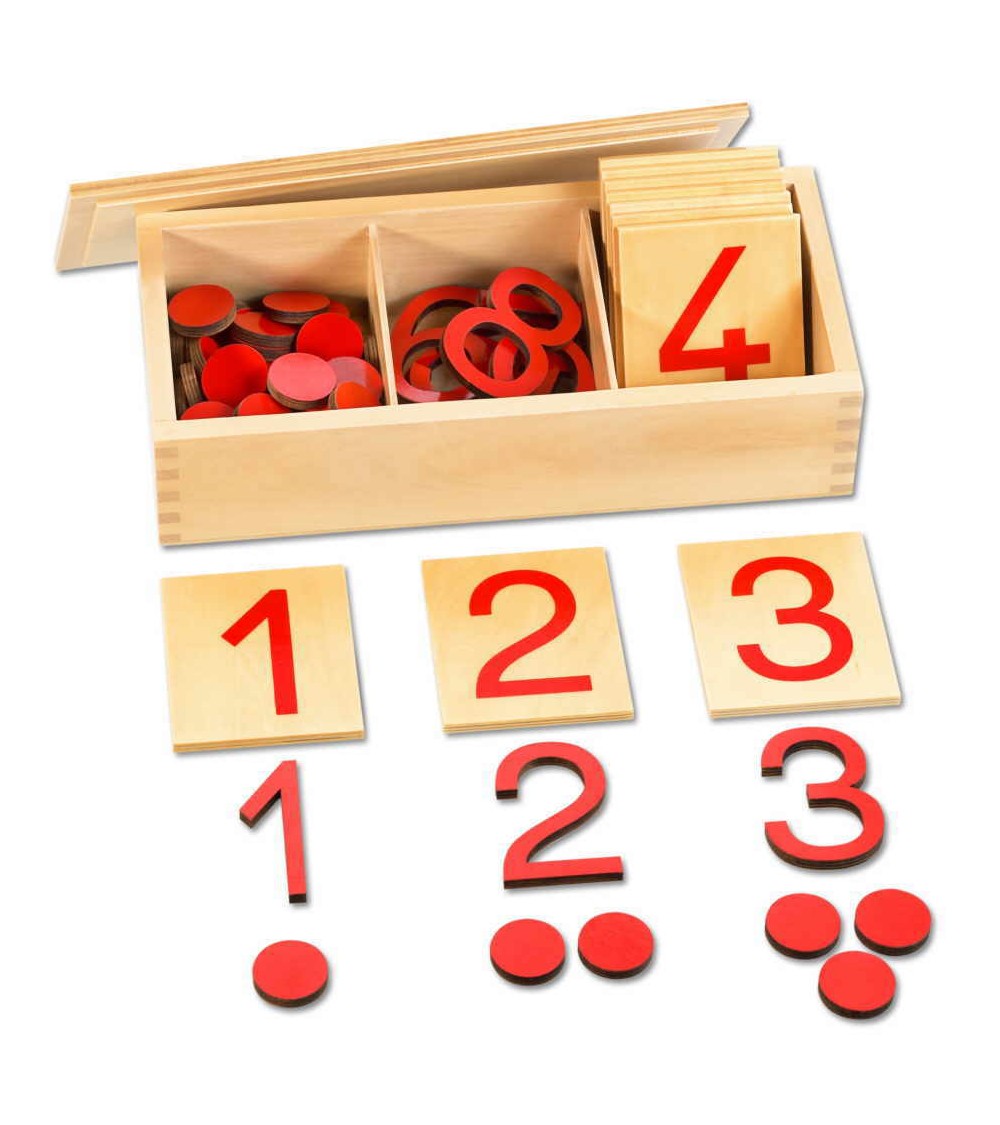Red digits and chips
Red digits and chips, learn the numbers 1 - 10 with Montessori material
The Montessori material digits and chips lets children from the age of 5 understand the numbers up to 10 in the truest sense of the word. The numbers from 1 to 10 are clearly legible on the wooden number plates. The child can, for example, put the round red wooden chips next to the respective number plate while counting them out loud, so that the proportions and divisibility become apparent. The red lacquered number figures, sawn from wood, are also very popular - that's math you can touch!
Application, advantages, areas of application for this Montessori material:
-
- Learning to count the correct number of chips
-
- Practice dividing quantities
-
- Create security in the ZR 10
-
- Montessori material for children from 5 years
-
- Practice recognizing numbers and their values
-
- Explain the assignment of quantity to number
Scope of the Montessori numerical material:
10 number plates 1 to 10, wood, approx. 8.5 x 6.5 cm
10 wooden numbers 0 to 9, approx. 4 x 6 cm
55 chips, plastic, diameter of 2.5 cm each
1 Wooden box with a lid for storage, approx. 26 x 10 x 6 cm
Instructions for the digits and chips
Practice the spelling of digits: For this exercise, only the tablets with the digits and the cut-out digits are required.
With the cut-out digits, the adult lays the series of numbers from 1 to 10 and names each number. Then he places the appropriate number plate over each digit and compares whether it was placed the right way round (e.g. whether the opening 3 is on the left and not on the right).
The loose numbers and number tablets are collected again - now it is the child's turn to lay them out. Practice
Quantity-digit assignment:
In this exercise, either the loose digits or the number plates are used.
The adult lays the number row from 1 to 10 with the loose digits or number boards and names each number.
Now the correct amount of chips is placed under each number and counted out loud, e.g. for the number three: one, two, three. The chips are placed one below the other in rows of two for each number. In the case of odd numbers, the last chip is placed in the middle under the others.
Success control here is that there is no more chip left.
Then the numbers and chips on display are removed and it is the child's turn.
Recognize even and odd numbers:
As soon as the child shows confidence in handling this material, the terms even and odd can be introduced.
To do this, you lay out the row of numbers and the associated chips on the table/work carpet as described above. Then you take a pen and place it vertically, in the middle between the chips for each number.
Now there are the same number of chips on each side of the pen. Odd numbers indicate that there is one chip left over. The adult moves the pen through the rows of chips again and names the correct term for each number, even or odd.
Variations:
A simple shopping game: some objects (e.g. toys) are searched for and placed on the carpet. Now everyone is given one of the digits that represent the price tags,
e.g. the car gets three, the doll gets five, the coloured pencil gets one.
The child is given chips in a wallet or bowl. Either the adult instructs them to buy certain things, or they can buy whatever they want.




